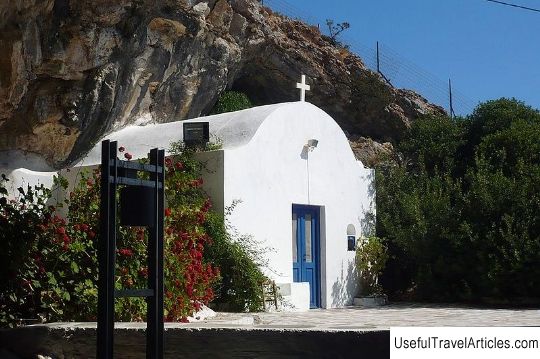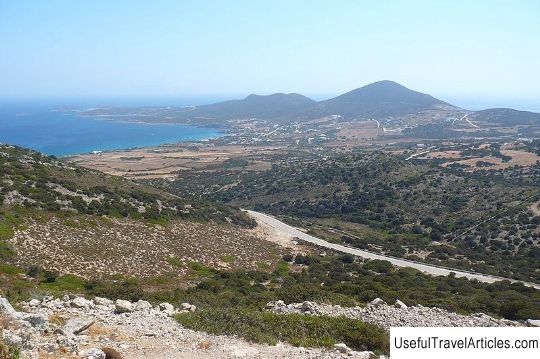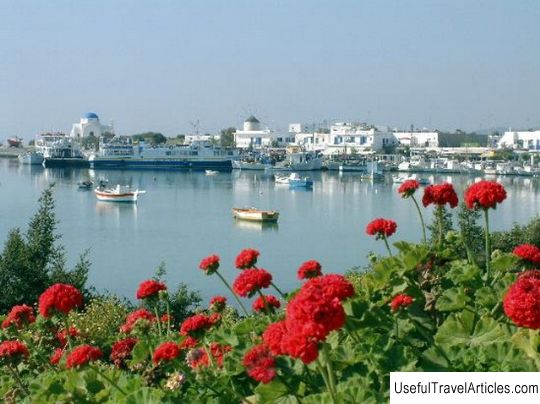Antiparos Cave description and photos - Greece: Paros Island
Rating: 7,5/10 (100 votes) 
Antiparos Cave description and photos - Greece: Paros Island. Detailed information about the attraction. Description, photographs and a map showing the nearest significant objects. The title in English is Antiparos Cave. Photo and descriptionThe main attraction of Antiparos and its "pearl" is the ancient cave. It is located in the southeastern part of the island and is considered one of the most beautiful and famous caves in the world. This magnificent natural creation impresses with an abundance of beautiful stalactites and stalagmites of the most varied and bizarre forms. The cave has a very long and interesting history. It is believed that people began to use this cave as a hiding place since the Neolithic era. This assumption is probably made on the basis of archaeological data, according to which these places have been inhabited since the Neolithic period. Later, the cave was used as a sanctuary and a place of worship for the goddess Artemis. And in the 4th century BC. Macedonian commanders used it as a refuge after a conspiracy against Alexander the Great. One of the earliest famous visitors to the cave is the ancient Greek lyricist Archilochus (728-650 BC), who visited this creation of nature in deep antiquity and even left an inscription. In 1673, the French ambassador to Constantinople, the Marquis de Nointal, with his companions visited it. It was then that the famous Christmas service took place here, and the stalagmite, very similar in shape to the altar, was named "Holy Table" and an inscription in Latin as a memory of this event (the inscription has survived to this day). In September 1840, the first king of Greece, Otto and his wife Amalia, visited the cave. During the Second World War, during the occupation period, part of the cave was destroyed. Large-scale restoration work was carried out already in the early 2000s and was funded by the EU. Special barriers, stairs were built, as well as lighting, surveillance cameras and loudspeakers to inform visitors. The oldest stalagmite found in the cave can be seen near the cave entrance. Its age, according to experts, is 45 million years. It is also considered to be the oldest in Europe. Near the entrance there is also a small snow-white church of St. John, built in the 18th century. The amazingly beautiful ancient cave is famous all over the world and is visited by a huge number of tourists every year.         We also recommend reading Museum Thyssen-Bornemisza (Museo Thyssen-Bornemisza) description and photos - Spain: Madrid Topic: Antiparos Cave description and photos - Greece: Paros Island. |




